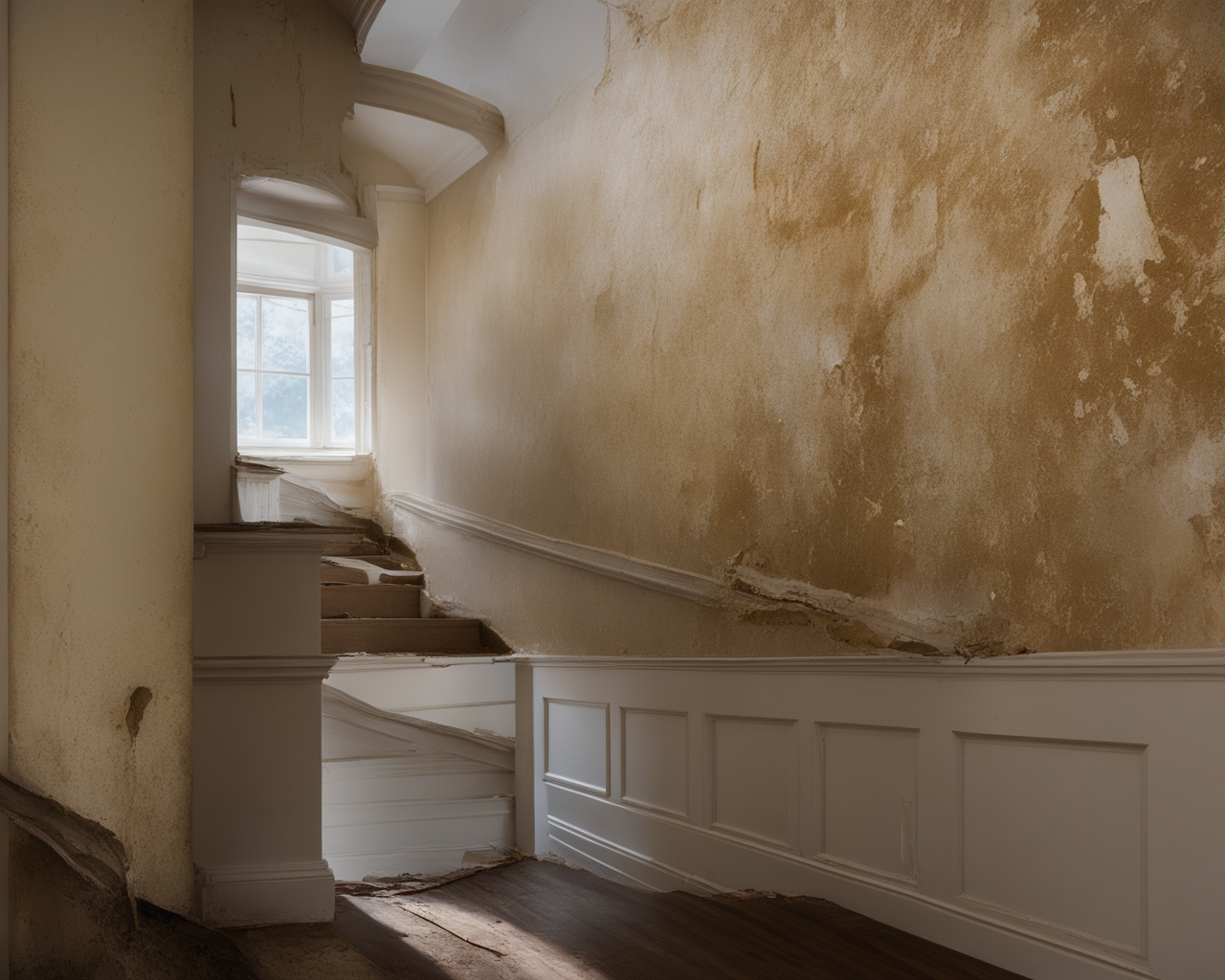Dashboard

Let’s talk facts: Over 14,000 people in the U.S. alone experience a water damage issue in their home every day.
That means there are thousands and thousands of pieces of water-damaged real estate (from anything ranging from a flash flood, to a leak in the house, to a dishonorable home-build near wetland) across the country at this very moment.
Those are the kinds of directions that, when taking a stroll around the block, you never seem to pass by. On the other hand, if you are a homeowner looking to sell a home that has been exposed to some random act of water damage, or anything else, then I guess the 14,000 figure above kind of gives you some insight into just how easy, or hard, you may have it.
Selling water-damaged real estate: Saying that three times fast may be a bit more challenging than actually selling one of these water-damaged homes.
There’s a market for every type of house. In fact, there are currently a handful (and probably more) of websites promoting water-damaged homes for sale online right now.
Continue reading to learn about how to conduct a periodic water-damaged homes assessment; how to include a disclaimer list with each home you sell, or already own; and another strategy about how to creatively sell a home after a flash flood in the spring. This article will go into the goods, the bads, the positives, and the negatives with selling homes “like water.”

Understanding Water Damage
Water damage is defined as the loss or destruction caused by water intruding where it attacks materials or systems. The common causes are floods from a large amount of falling rain, a pipeline bursting, or through leakage from an appliance, and yes, your roof. If your roof is letting in even a small amount of water, over time, it will potentially produce major issues, such as mold growth or other significant structural issues. Since moss is an early contributor to water leakage, you see why you need to treat it!
Water damage not only costs money to perform immediate repairs. Depending on how extensive repairs are and the cost to purchase, this reduction in housing price varies and averages from 3 to 20 percent less than expected. Your home may not sell at or over the listing price if you have any signs of water damage.
Yet, the statistics and quotes above can be scary as hell for any homeowner. This can be financially destructive if planning to sell shortly or damage has occurred for an extended period and it’s still ongoing.
In theory, no… but in reality, yes! Water damage includes the general term, “mold.” Depending on how long it’s taken to re-mediate and repair will determine if you sell your home within 30 or less (seller’s market) or 90 days. This may be a sign you must make an “AS-IS” sale. This refers to the average days of selling a house with no issues versus one with a water-damage or repair-related problem.
From previous experience, a home with a history of water issues will need to have completed full disclosure if they make any selling plans. Before or after the sale of your home, if it hadn’t been inspected or looked at for a full evaluation, an insurance underwriter will take a close look. Once chosen for insurance to be given proof of inspection completed, can make an all-too-ready agreement of the sale during negotiations go awry.
Got some interest in knowing me out? Next, we’ll walk into doing helpful actions to take if there’s interest in repair work and other proactive steps to combat minor or major water damage clean-up.

Assessing the Damage
Taking just a moment to examine the status of your home can be super beneficial to the safety and destinations of your future hospitality projects. It’s important to know how far water has seeped into the materials of your home. To do this, go ahead and look at your walls, ceilings, and floors for darker spots, warped surfaces, mold, and common critical signs—always check places around windows, doors, and things like sinks and baths. Although professionals will soon use their own detection instruments on your home, consider employing thermal detection during your visual endeavors.
Often, even professionals will use thermal imaging cameras (a great tool for assessing temperature differentials in electronics) to work on spaces and angles in homes where it doesn’t comfortably make sense to cut holes into drywall. Like any reliable tradecraft, having non-destructive workflow options are always important. As with anything, it’s your professional inspector who should suit up and use moisture instruments. There are just too many intangible subtleties that go unnoticed; so, do as much as you can until your inside the budget and on-schedule to hire licensed professionals to get the job done the right way. As a homeowner, ask yourself, “What is the recovery plan and where do I begin?”

Navigating Property Damage Claims
If you need to file a property damage claim with an insurance company, it’s important to notify the insurance company immediately after you notice the damage. Many insurance companies require claim notification within a set amount of time after the damage has occurred, especially for certain kinds of events. When you make contact, you should be prepared to tell them about the damage; when the damage occurred (day, time); how the damage occurred (exact nature of the event); and what has been damaged. Keeping clear photographs of the damaged items in the insurance claim file, from several angles, will be helpful. If any purchases are recent there might be sales receipts nearby to help your case.
You should also document the damage and the availability of receipts that you have for damaged items. If you’re the person making the purchase, you can walk through the house and find much of the damage yourself. With photos and possibly and old outside box, most times you can determine your property’s value down to the detail of the version of the item that’s damaged.
During your insurance claim, it can be very helpful to make a lot of notes and ask questions during your claim. Keep records and follow up in writing if you get any pushback from the representative(s) you’re working with. If any representative puts you out of your comfort zone, there are several insurance company departments that you can contact for help during the claim. Don’t underestimate their interest in your insurance claim experience and the potential importance of your claim on their operations.

Preparing Your Home for Sale
Restoring a water-damaged home itself is another matter. The process must be methodical.
You should start with mitigating the initial water infiltration that could be due to… a bad roof, a broken water line, or even water damage from a flood.
Once you have stopped the water from coming in, the hard work begins. You will need to pump out or vacuum up any standing water.
Next, blow air on the remaining damp and affected areas to dry them out. If you don’t, you risk areas of your home beginning to grow mold & mildew. A good air mover blower fan or a dehumidifier should work fine for small jobs. You’ll need something more high-powered for bigger areas.
If there is much material you need to replace, you may also experience a significant cost for the materials and/or the labor to install them. Depending on the cause of the water damage, you may even find drywall, baseboards, and flooring that needs replacing.
Meanwhile, if the home is on the market, that’s a couple more weeks of listing time. Be sure to stage and present the property well. You likely already spent time to declutter your home, so it’s now clean and tidy.
Your prospective buyers can see your walls a bit better now, so they’ll know if your home needs a paint job. If you look around and aren’t satisfied with your walls — or if something makes you think they could use a once-over — don’t hesitate to break out the rollers and freshen things up.
Be sure to make all necessary repairs. A cautious home buyer will be sure to do a very thorough inspection of the home.
Use this time — now that you can easily see your floors and walls — to finally get yourself to take care of that one trouble spot. And if you notice anything that’s not quite right when you look at your ceiling and roof, who’s to say a potential buyer won’t notice it too?
By the way, you will also need to disclose the full history and details of water damage to potential buyers. It’s a simple matter of integrity. Ethical and legal questions aside, it simply puts everything out in the open. The buyer sees everything, including an inspection history and invoices from all the work and improvements that you’ve made.

Marketing Your Water Damaged Property
Moving a water-damaged home is a different beast, and you need to lean heavily on effective marketing.
A real estate agent is a valuable asset for situations like this when you’ve got a slightly off-kilter house to sell. They’ll be able to understand prevailing market conditions, in general, and make educated suggestions of ways to position your home to get it sold regardless. If they’re able to get some of their network out to visit the home, better yet.
Your online listing of your home must be created as effectively as possible if you’re trying to sell a water-damaged home. As many photographs as you can get using the best-quality photographs you can take, accompanied by an explanation of the best spots for further renovation on the property or to explain the path your own planned (but unrealized) repairs were going to take can be helpful. Bring informed investors to your listing by mentioning the existence of persistent water damage. Make it a better idea for buyers to see this listing when running a search by sticking it in categories where investors are more likely to browse (like searches for “cheap fixer-uppers”).
Set a fair price. Understand that your pricing is not based solely on the condition of the house but based on the price homebuyers would expect to pay for a house and then hire in the expertise to have it repaired expertly themselves. Consider the extent of the flooding. Have your real estate agent run a comparative market analysis of the home and provide a suggested price point for your house.
Legal Considerations
If you’re trying to sell a property with water damage, you need to be aware of your legal responsibilities. Those relate primarily to your duty to disclose problems. If you know of a defect with your house, you are almost universally legally required to disclose it. If you don’t, the penalties could be quite severe; we’re talking a lawsuit from the buyer, who you obviously can’t hide the problem from forever. This duty exists in order to protect consumers. They should be able to make informed decisions when buying a house.
Disclosure is a big deal. No wonder industries are built on it! While disclosure laws differ by state, most don’t require sellers to take a detailed survey to look for problems — but they should disclose issues that they know about. If a seller commits fraud (by concealing water damage from flooding, for example), they will find plenty of liability waiting for them. Indeed, if a buyer suffers damages (e.g. the costs of repair), they can likely sue the seller to recover those damages, plus legal fees and expenses. Punitive damages might also be appropriate if the seller’s actions were especially egregious.
As a part of buying a house, that buyer will likely have an inspection before the deal finally closes. If that inspector finds water damage, your deal could be off (or at least, renegotiated). So, avoid giving buyers any surprises by telling them upfront about your history. It makes good sense, both legally and for maintaining your own good reputation. What comes around, goes around, right?
Make sure that you understand the implications of the law before you sell that house. Know what you are signing, and understand that eventually, a problem could come back to hurt you. If you do know about water damage, tell your prospective buyer. Indeed, if you know that your basement floods every spring and say nothing about it to the buyer, you should have an overall right to be upset and to sue when they find out.
“If you’re about to sell a water-damaged house, but you’re unsure about how to go about it, there are a few things you can do:
Know how extensive your water damage is. Repair what you can from the start. Don’t hide the damage that exists. A good percentage of those selling houses with water damage will likely invest at least a small amount of money to fix the home before selling it. Even sellers in the best markets are conscious of their home’s condition, willing to pay for ways to improve it before a sale.
You don’t want to sit idly by before you sell a water-damaged house. Hop on a call with an agent and discuss your local market. Get a good feel of what buyers like and don’t like in your area, and ask for an idea of what they would pay for a house your size, in your area, with or without water damage.
Odds are, real estate agents will be the ones selling your house for you. Get their input on what appeals to buyers, the seasonality of home sales in your area, and a good price based on your home sales goals. Then they can build a strategy to find someone who will buy your home with water damage.
While you’re at it, consult an insurance agent to see which repairs are covered under your homeowner’s insurance. You might save thousands of dollars on pre-listing renovations.
